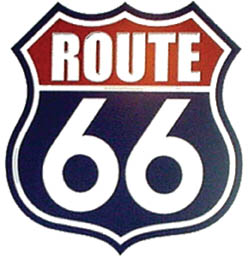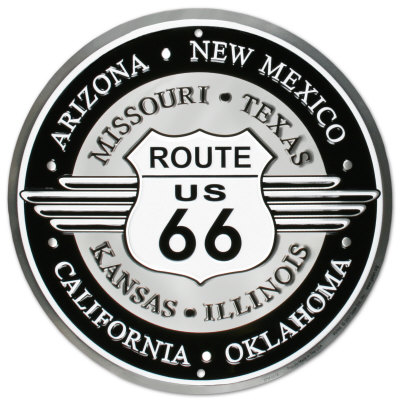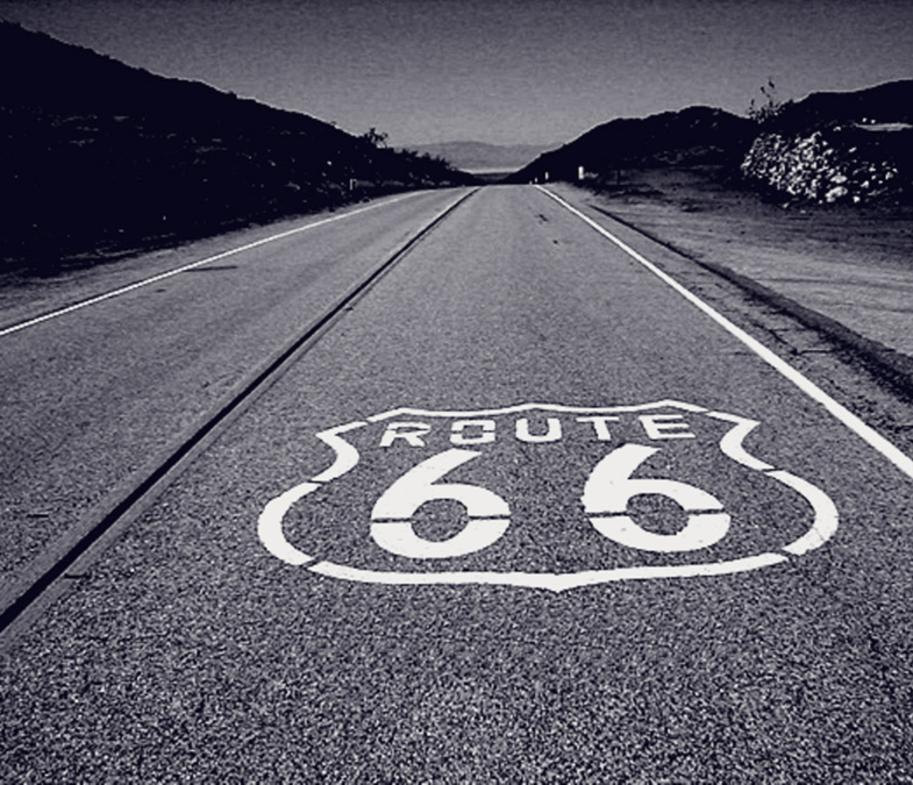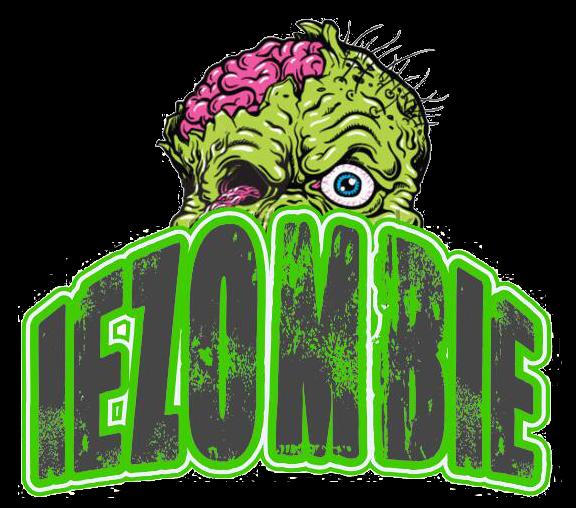Route 66 has held a special place in the American consciousness from its beginning. The road is uniquely American. There are a thousand stories of hope, heartbreak, love, hate, starting over, and new dreams found along the next bend of the highway we call the Mother Road. The story of Route 66 is our story; it embodies what makes us a great nation. No other culture has had the same type of love affair with the automobile, and few have had the wide-open spaces offered by the American West.
The 2,400-mile route winds from Jackson Boulevard and Michigan Avenue in Chicago to Los Angeles, through the most romantic and celebrated portions of the American West. Route 66 was a lifeline through much of America, connecting the small midwestern towns of Illinois, Missouri, and Kansas, with the big cities of Los Angeles and Chicago.
The romance of Route 66 continues to captivate people around the world. Running between Chicago and Los Angeles, “over two thousand miles all the way” in the words of the popular R&B anthem, this legendary old road passes through the heart of the United States on a diagonal trip that takes in some of the country’s most archetypal roadside scenes. If you’re looking for great displays of neon signs, rusty middle-of-nowhere truck stops, or kitschy Americana, do as the song says and “get your kicks on Route 66.”
For three decades before and after World War II, Route 66 earned the title “Main Street of America” because it wound through small towns across the Midwest and Southwest, lined by hundreds of cafés, motels, gas stations, and tourist attractions.
During the Great Depression, hundreds of thousands of farm families, displaced from the Dust Bowl, made their way west along Route 66 to California, following what John Steinbeck called “The Mother Road” in his vivid portrait, The Grapes of Wrath. After World War II, many thousands more expressed their upward mobility by leaving the industrial East, bound for good jobs in the suburban idyll of Southern California—again following Route 66, which came to embody the demographic shift from the Rust Belt to the Sun Belt.
Beginning in the late 1950s and continuing gradually over the next 25 years, old Route 66 was bypassed section by section as the high-speed Interstate highways were completed. Finally, after the last stretch of freeway was completed in 1984, Route 66 was officially decommissioned. The old route is now designated Historic Route 66.
The same commercial know-how and shameless self-promotion has helped the towns along the old route stay alive. Diners and motels play up their Route 66 connections, and many bona fide Route 66 landmarks are kept in business by nostalgic t ravelers intent on experiencing a taste of this endlessly endangered American experience.
Route 66 passes through a marvelous cross-section of American scenes, from the cornfields of Illinois all the way to the golden sands and sunshine of Los Angeles, passing by such diverse environs as the Grand Canyon, the Native American communities of the desert Southwest, the small-town Midwest heartlands of Oklahoma and the Ozarks, as well as the gritty streets of St. Louis and Chicago.
Whether you are motivated by an interest in history, feel a nostalgic yearning for the “good old days” Route 66 has come to represent, or simply want to experience firsthand the amazing diversity of people and landscapes that line its path, Route 66 offers an unforgettable journey into America, then and now.
Route 66: America's Mother Road



